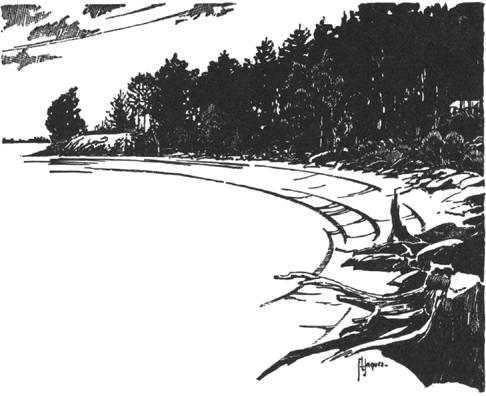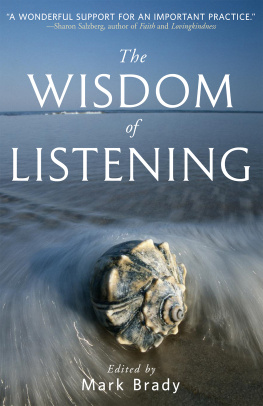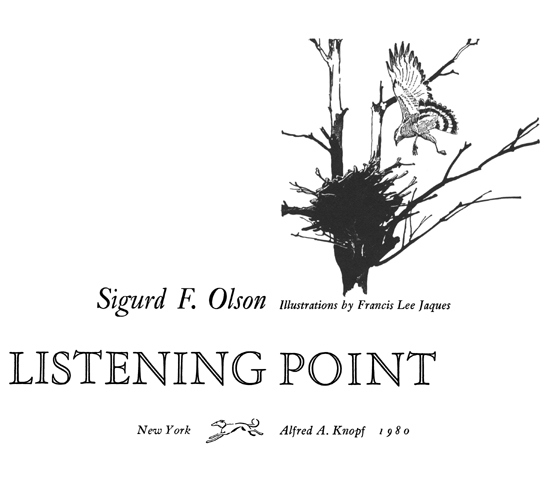Other Books by Sigurd F. Olson
THE SINGING WILDERNESS
LISTENING POINT
THE LONELY LAND
OPEN HORIZONS
WILDERNESS DAYS
THE HIDDEN FOREST
Illustrated by Les Blacklock
REFLECTIONS FROM THE NORTH COUNTRY
These are Borzoi Books
published by A LFRED A. K NOPF in New York

L. C. Catalog card number: 5810971
Sigurd F. Olson, 1958

Copyright 1958 by Sigurd F. Olson. All rights reserved. No part of this book may be reproduced in any form without permission in writing from the publisher, except by a reviewer who may quote brief passages and reproduce not more than three illustrations in a review to be printed in a magazine or newspaper. Distributed by Random House, Inc. Published in Canada by Random House of Canada, Limited.
Published September 22, 1958
eISBN: 978-0-307-82225-3
v3.1
To
all who have found Listening Points of their own
and to those who are still searching
ACKNOWLEDGMENTS
I AM DEEPLY GRATEFUL FOR criticism, editing, and encouragement to Ann Langen and Florence Peterson of Ely, to Jean and Fred Packard of Washington, D.C., and to my family, especially my wife, Elizabeth.
My deep appreciation goes to Francis Lee Jaques for his superb sketches for Listening Point.
For professional advice and counsel on chapters of scientific and historical interest, I am indebted to Mr. John Dobie of the Minnesota Conservation Department, St. Paul; Dr. Olga Lakela, Botany Department, University of Minnesota at Duluth; Sigurd T. Olson, Fish and Wildlife Service, Fairbanks, Alaska; Clair F. Rollings, Fish and Wildlife Service, St. Paul; Milton Stenlund, Minnesota Conservation Department, Grand Rapids; Dr. Grace Lee Nute, History Departments, Hamline and Macalester Colleges, Minneapolis; Dr. G. M. Schwartz and Dr. George Thiel, Geology Department, University of Minnesota; Dr. William Marshall, Department of Economic Zoology, University of Minnesota.
The quotation used in Young Ottertail came from W. H. Hudsons Days of My Boyhood.
Lewis O. Shelleys vivid description of the soaring of the broad-wings was taken from Life Histories of North American Birds of Prey, by Arthur Cleveland Bent.
CONTENTS

CHAPTER 1
LISTENING POINT
L ISTENING P OINT is a bare glaciated spit of rock in the Quetico-Superior country. Each time I have gone there I have found something new which has opened up great realms of thought and interest. For me it has been a point of discovery and, like all such places of departure, has assumed meaning far beyond the ordinary.
From it I have seen the immensity of space and glimpsed at times the grandeur of creation. There I have sensed the span of uncounted centuries and looked down the path all life has come. I have explored on this rocky bit of shore the great concept that nothing stands alone and everything, no matter how small, is part of a greater whole. The point has shown me time and again that William Blake was right when he wrote:
To see the world in a grain of sand,
And a heaven in a wild flower;
Hold infinity in the palm of your hand,
And eternity in an hour.
I believe that what I have known there is one of the oldest satisfactions of man, that when he gazed upon the earth and sky with wonder, when he sensed the first vague glimmerings of meaning in the universe, the world of knowledge and spirit was opened to him. While we are born with curiosity and wonder and our early years full of the adventure they bring, I know such inherent joys are often lost. I also know that, being deep within us, their latent glow can be fanned to flame again by awareness and an open mind.
Listening Point is dedicated to recapturing this almost forgotten sense of wonder and learning from rocks and trees and all the life that is found there, truths that can encompass all. Through a vein of rose quartz at its tip can be read the geological history of the planet, from an old pine stump the ecological succession of the plant kingdom, from an Indian legend the story of the dreams of all mankind.
For a long time I had looked for such a place, explored the country within reach of home for some spot that held what I wanted, and I wanted many things. There should be sunsets and moonrises and northern lights, a little beach and water that was crystal clear, glaciated rocks, a level spot for a tent, and a place for a cabin too. Above all, there should be vistas into wide open space, loons with the dusk full of their calling, seagulls screaming in the mornings and the long lazy sweep of them as they come in to feed. Such things were important to the purpose I had in mind, for through their magic I would be more aware and alive and sense what I had known on many exploring expeditions of the past.
One day after a long search I found my point. I had come through woods and swamps off the end of a road and was suddenly out of the brush and trees on an open shelf of rock. There it was as I had dreamed, a composite picture of all the places in the north that I had known and loved. I stood there for a long time, then walked over the gray ledges to the end of the point. Its tip faced the west, and across a mile of open water were clusters of rocky pine-clad islands with narrow channels between them.
Then I saw the campsite, a flat patch of bearberry on a shelf above the waters edge, high enough to be safe from the waves, a place I would have chosen with joy on any canoe trip I had ever been on. Here I could roll up in my sleeping-bag and feel I was still far in the bush.
The crest of the point was smooth, but fringing it all around were the pines, the gnarled wind-swept ones, the twisted weather-beaten specimens for whom life had been hard, some of them a century of age and still no bigger than a post. Back of the crest was a game trail leading through a colonnade of tall trees toward the ridges in the east.
I discovered there was not only one glaciated spit of rock but several. They lay like an open hand, with the widespread thumb holding a crescent bay between it and the palm. The fingers were half closed, the middle one facing the sunsets, the index the moonrises, the little finger the wild free expanses of the north channel.
I followed the deer trail through the pines and down to the bay. There was just a chance that the southwest winds of thousands of years might have had their effect on the rocks of that little cove. It was screened by a fringe of alder and willow, but when I stepped onto a flat rock beyond them, there was a tiny strip of white sand sloping gradually into the deep and the water so clear I could see the ripple marks far out from shore. Sheltered from the cold northwest gales, the little bay would always be warm and swimming a joy.
The end of the thumb was a bold rocky ledge with a pine tree standing there alone. I started over there and halfway found a stand of Norway pines and clusters of white birch scattered among huge craggy rocks. From the top of one of them I could see the beach and the point itself and the vistas across to the islands and knew the search was over. Here was everything I had ever hoped to find. I would never own the water or the horizons, but the sunsets, the moonrises and the vistas would belong as much to me as though written into the deed itself.











